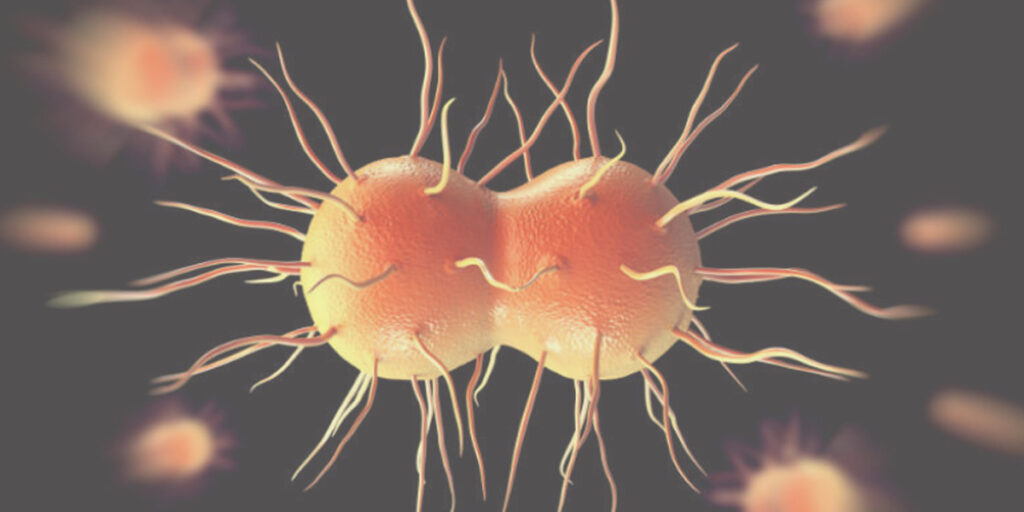Early STD Testing: Why Timely Detection Matters for Your Health
When it comes to sexually transmitted diseases (STDs), early detection and treatment are crucial for

It’s not unusual for sexually transmitted infections (STIs) and sexually transmitted diseases (STDs) to have nicknames. Gonorrhea is a common STD that has long had the nickname “the clap” or “the drip”—and today, many people still refer to it that way. The origins of the nickname go back generations. But why is gonorrhea called “the clap”?
We’ve found several possibilities for why the slang name evolved. Our team at Rapid STD Testing is here to help you understand what getting “the clap” STD means and how the condition affects men and women.
Gonorrhea is a bacterial infection caused by the Neisseria gonorrhoeae bacterium, and a person can catch it by making contact with semen and vaginal fluids. For that reason, it’s an STD that both men and women can contract through oral, anal, and vaginal sex with someone who carries the infection.
Gonorrhea is one of the most prevalent STDs globally, especially in people between 15 and 24 years of age. Though the bacteria stay in vaginal fluids and semen, they can cause infections and complications within the throat, mouth, eyes, anus, urethra, cervix, uterus, vagina, and fallopian tubes. Pregnant woman with gonorrhea can pass their infection to their babies during birth.
Men and women who participate in sexual activities with someone infected with gonorrhea are at risk of contracting it themselves. Unfortunately, it’s hard to know if your potential partner has the condition since some people don’t display symptoms of gonorrhea.
Estimates for people who are infected but asymptomatic range from 10% to 50%, making it challenging to know who has the condition without a gonorrhea test. So it’s always a good idea to get a 10-panel STD test from Rapid STD Testing at least once a year or when you change partners.
Some of the common symptoms of gonorrhea in men and women include:
Some people may notice symptoms in their rectal area if they contract the infection through anal sex. Rectal symptoms may include:
Other less common symptoms of gonorrhea in women are abdominal pain, painful intercourse, and bleeding between periods. Men may develop pain or swelling in their testicles.
Gonorrhea has been around for much of human history. In a medical textbook he penned, the Chinese emperor, Huang Ti (circa 2600 BC) described a disease resembling gonorrhea. Many Old Testament scholars believe that Leviticus 15:2 was referring to such a condition in the line stating that “when any man hath a running issue out of his flesh, because of his issue he is unclean.”
The famed Greek physician, Galen, who lived from 130-200 AD, named the condition gonorrhea using the Greek terms gonos (semen) and rhoia (to flow). The disease was prevalent in ancient Greece as well as Rome, where soldiers in Julius Caesar’s army reportedly suffered from it.
Gonorrhea soon became associated with prostitution and brothels, and men in military service and on the Crusades became its ready victims. Documents from the English Parliament in 1161 describe a law that the government enacted to help the country reduce the spread of “the perilous infirmity of burning.” King Louis IX of France enacted similar regulations in 1256.
Years later, after the Catholic Church secularized medical practices, doctors began treating commoners and prostitutes experiencing the symptoms of gonorrhea. The treatments of the past are nothing like they are today. Here are some of the outdated and ineffective botanical methods people used to treat gonorrhea in the past.
It wasn’t until 1879 that Albert Ludwig Sigesmund Neisser proved that the N. gonorrhea bacterium was a causative agent of gonorrhea. With his discovery, doctors began applying medical treatments with antiseptic properties to places where the infection would hide: within the membranes of the urethra and cervix.
Before Neisser’s discovery, treating gonorrhea symptoms was incredibly invasive and sometimes dangerous. One of the earliest treatments involved mercury, a natural chemical element toxic to the digestive, immune, and nervous symptoms.
The earliest findings for treating the clap using mercury go back to the Mary Rose, an English warship that sank in 1545. Doctors would use surgical tools, like those on the ship, to inject mercury into the urethra to cure the condition because mercury was known to have antibacterial properties.
By the 1800s, mercury gave way to silver nitrate. That treatment didn’t last long, though. Protargol, a type of colloidal silver, was sold by Bayer in 1887 as an alternative drug.
Other metals that doctors used to combat gonorrhea infections included:
Still, Bayer’s medicine and other drugs with metallic compounds weren’t the most popular treatment of the time. In 1859, cubebs, an Indonesian pepper, and copaiba balsam from a South American tree were the go-to treatments. Doctors used the powdered plants to reduce inflammation and stop the discharge, but both plants irritated the gastrointestinal system.
Despite Neisser’s discovery in 1879, it didn’t result in immediate therapeutic advances. However, in 1910, the New York City Health Department developed an anti-gonococcal vaccine using isolated cultures of the bacterium after the success of tetanus and diphtheria antitoxins from the 1890s. Doubts of the vaccine’s efficacy led to its abandonment in the 1950s.
Healthcare professionals continued treating patients with gonorrhea using other drug treatments until the 1940s, thanks to the discovery of penicillin, an antibiotic. Until then, medical treatment schedules were invasive and intensive, often requiring a different medicine for every day of the week. Patients would inject solutions containing the following compounds into their urethra using an irrigation tube:
Penicillin revolutionized gonorrhea treatment because it was effective but with fewer side effects than older medical treatments. With antibiotics, patients no longer needed to undergo complicated therapies. Penicillin-based antibiotic treatments continued until the 1970s when penicillin-resistant gonorrhea strains appeared.
In 1986, the World Health Organization (WHO) recommended doctors only administer penicillin to treat gonorrhea in regions where antimicrobial resistance wasn’t high. However, the knowledge of antibiotic resistance wasn’t new because scientists had documented it in the 1940s.
Today, the Center for Disease Control (CDC) recommends a two-part therapy using dual antibiotics to combat N. gonorrhea in different ways. The proper medication will cure the infection even though the bacterium continues developing resistance to antibiotic medications.
When people call gonorrhea “the drip,” they are referring to one of the primary symptoms of the infection: pus-like discharge from the penis or vagina. However, discharge is a symptom of other STIs, such as chlamydia, which often confuses people about which STI they possibly have if they experience drippy or runny discharge.
The more frequently used slang for gonorrhea is “the clap.” Unlike “the drip,” the reason why people say “the clap” is less certain.
So, why is gonorrhea called “the clap?” Let’s explore some possible theories.
The term may come from “clapier,” a Middle French slang word for a brothel stemming from the 1500s. Since gonorrhea is sexually transmitted, many people with infections would be prostitutes and their customers, who would then spread it to other partners.
In medieval Paris, prostitutes would live and work in the brothel district called Les Clapiers, which translates to “rabbit huts.” Rabbits are universally known to lead prolific sex lives and reproduce quickly, so the term became associated with prostitution and then with the disease of prostitutes. Men with the clap would say they had “clapier bubo,” meaning they had an infection of the penis resulting from a trip to a brothel.
Old English may also be responsible for people referring to gonorrhea as the clap. Some etymologists believe the term comes from the English word “clappan,” which means to beat or throb. Unlike clapier, which refers to where or how someone could get the bacterial infection, clappan could indicate the throbbing sensation men experience in their penises due to inflammation or the painful urination that both men and women experienced.
Despite the folk medicinal treatments people had to treat gonorrhea throughout the centuries, some treatments may have been more hands-on—and harsh. For instance, some theories exist that medieval doctors would try to alleviate men’s discharge and inflammation by “clapping.”
The treatment (which lacks evidence) would have been a disturbing process of “clapping” or slamming the infected penis between heavy objects or the doctor’s hands to force the pus-like emissions from the urethra.
May have People believed that removing the pus-like material from the penis was the best way to cure the affliction. It’s not surprising if the supposed treatment did little to treat the infection because it would have caused pain and bodily damage but not treat the infection.
This history should make you happy to be living in the 21st century! So, why is gonorrhea called the clap? No one knows for sure. But gonorrhea testing from Rapid STD Testing will let you know if you have the condition so you can get quick, modern treatment with antibiotics.

No embarrassing exams, long waiting lines, or multiple visits. Just a quick lab visit for fast results.
Discover a lifestyle-focused approach to quality content at RapidSTDtesting.com. Unlike others, we don't rely on gimmicks or fabricated data to lure visitors. Our commitment goes beyond clicks – we're dedicated to answering the questions you search for online. With a team comprising medical experts and content specialists, our articles are meticulously crafted to promote STD testing, educate, and dismantle social stigmas.
Embrace a confidential atmosphere with our private testing options, ensuring your privacy is paramount. Every article is meticulously fact-checked and approved by medical advisors, guaranteeing accuracy and reliability. Our team, comprised of doctors and medical professionals, ensures that each piece of content serves a purpose – to inform, educate, and promote awareness.
Join us as we bridge the gap between medical expertise and lifestyle choices. RapidSTDtesting.com is your trusted source for informative, medically vetted content.